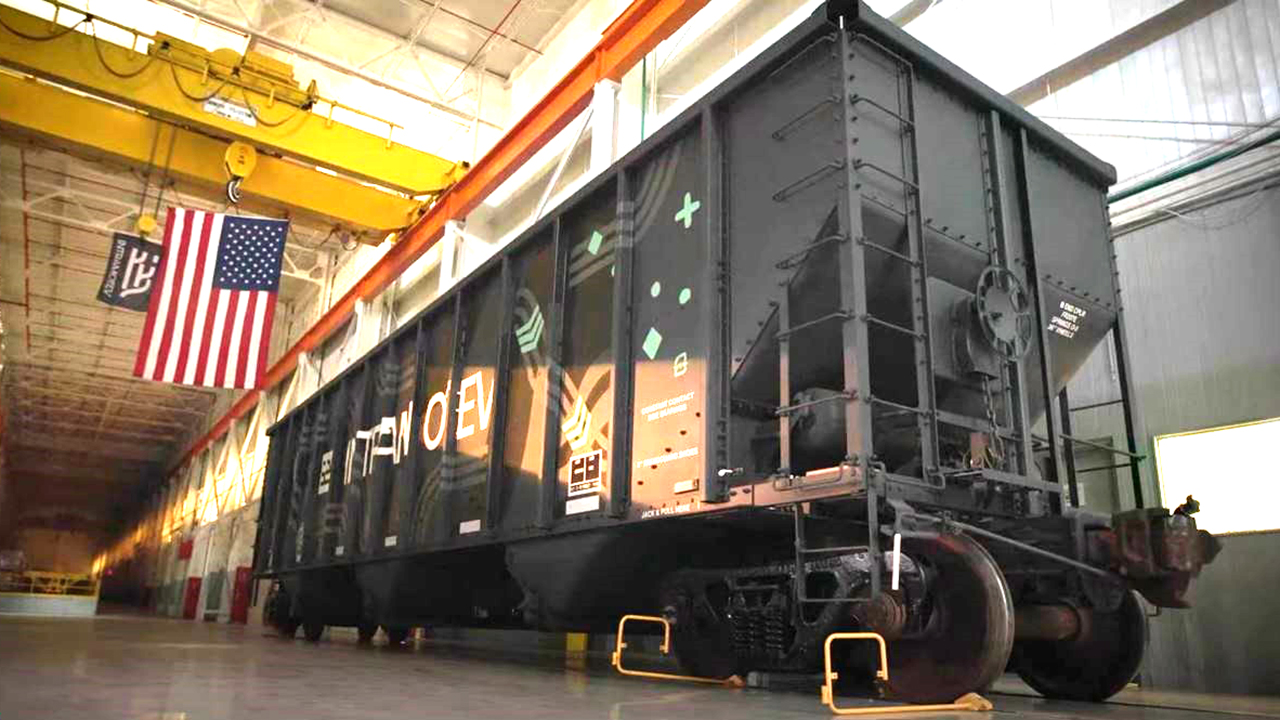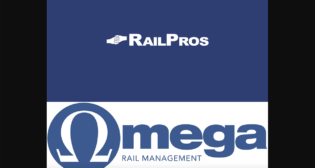
Intramotev Reports TugVolt Progress
Written by William C. Vantuono, Editor-in-Chief
Intramotevs Autonomous Rail photo
At the Innovation Day opening session of FreightWeekSTL 2023 in St. Louis, Mo., which kicked off May 22, startup Intramotev Autonomous Rail reported on the commercial launch progress of its TugVolt battery-electric, self-propelled, autonomous, zero-emission railcar, which can be used in standard railroad interchange service, according to the company.
Launched in January 2020, Intramotev has been focused on the development of the TugVolt, which the company claims “enables freight to move with the flexibility of a truck, without breaking the existing model of rail operations. This new railcar that would operate without the use of a locomotive has the potential to make the U.S rail system more efficient and sustainable, while also enhancing safety on the nation’s 140,000-mile rail freight network.
“Rail has been the backbone of the economy for a long time, and we are confident it is here to stay,” said Timothy Luchini, PH.D., co-founder and CEO of Intramotev Autonomous Rail. “If we can give them something that has the flexibility to work in the normal rail consist and train, as well as giving them a tool to be competitive with trucks—offering that speed and flexibility at a fraction of the cost and a fraction of the environmental emissions‚—and deliver a more timely solution for their customer’s demand, we can solve a couple of the pain points that the industry tends to suffer from.”
Luchini said the rail industry “is uniquely suited to be able to grow its market share and increase the $700 billion worth of goods that are moving across the country via rail.” He believes the solution his company is bringing to the market “can help drive that growth and is excited with the advances Intramotev is making toward demonstrating how to get that utilization factor up, keep materials moving and, and better utilize existing assets.”
In the past year, Intramotev has grown by 20 employees. It now has two operating facilities, including its original location in Granite City, Ill., and a new headquarters in St. Louis, Mo., a 20,000-square-foot space with the ability to produce and test TugVolts. An additional round of financing has been secured, which Luchini said “are being used to accelerate the development of our primary product and get it into customer hands, along with a couple of other differentiated products.”
Intramotev in 2022 secured Letters of Intent (LOIs) and engagement from customers using commercial demonstration test bed units for TugVolt. The company “now has converted that into a Minimum Viable Product,” Luchini noted. “Intramotev intends to deploy multiple vehicles and product variants to customers this year. These rail vehicles are being used for point-to-point moves where the rail is not interchange-connected and is considered insular by the Federal Railroad Administration. Customers are seeing anywhere from a 30% to 80% reduction in operating expenses and better use of currently owned, onsite assets. While the company continues to focus on captive private insular rail use cases like mines, ports and interplant materials moves, it is also looking to the broader rail industry as it proves its safety and reliability in captive-use cases.”
“Making the transition to networks that are interchange-connected requires a regulatory change, so Intramotev is collaborating with federal regulators to go through the waiver process to get its vehicles onto routes that can be interchange-connected,” Luchini said. “The company also will be working to grow future deployments and build out local relationships up and down the Mississippi River. The industry is open to new technology and what we are bringing to the market. We can step into those routes being used as a railcar as well as this independent mode of power that the TugVolt product offers, giving both the ability to complement a traditional, long train going across the country, enabling a short consist and then enabling independent point-to-point movement as well.” He added its solution “provides a strong means for improving safety and reliability of systems, as well as tremendous environmental benefits. If we can move as little as 1% of truck ton-miles to TugVolts, that’s going to be 4.4 million metric tons of CO2 eliminated on an annual basis. That is huge.”
Elaborating on the role Intramotev’s solutions can play in enhancing rail safety, Luchini called attention to the TugVolt’s claimed shorter stopping distance, “where you can get to starting and stopping more on the order of magnitude of a truck. Looking at something going 20 mph, you might be able to stop in as little as four car lengths with the traditional braking systems as well as the TugVolt electric braking systems, something a traditional train could never do. Enabling smaller trains and having sensors on individual cars that can dynamically give feedback can support a safer environment on the rail network.”



